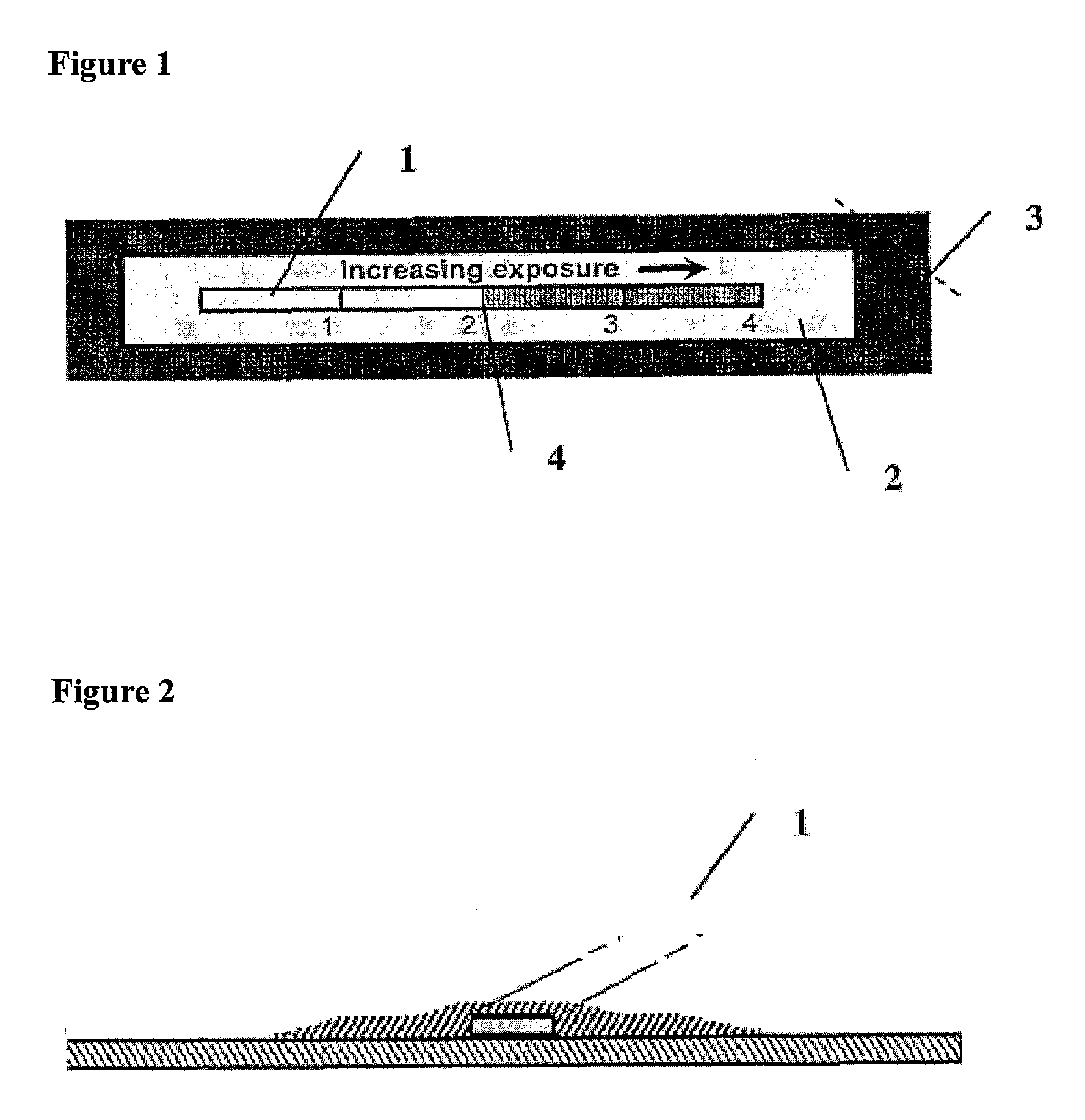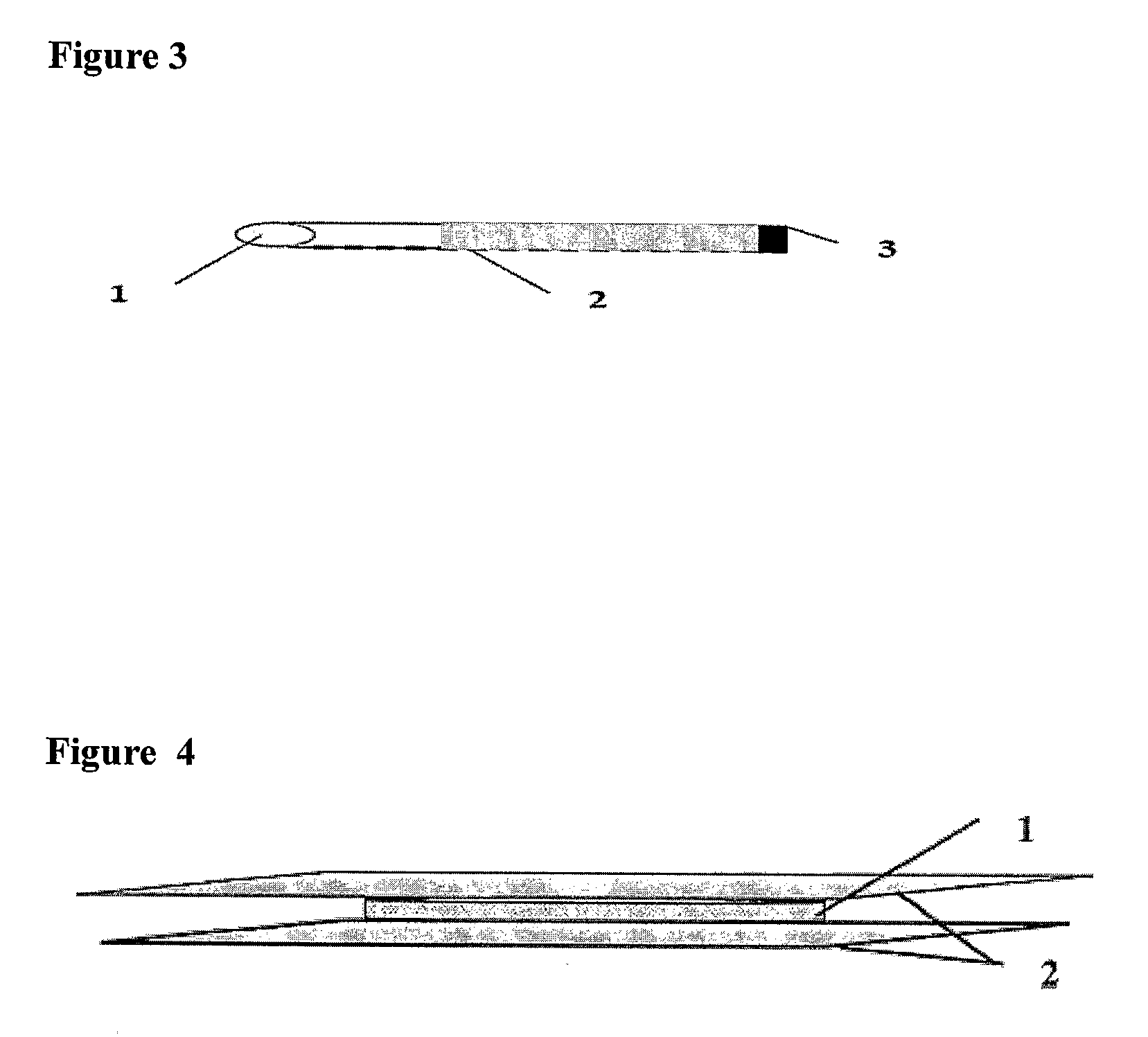Indicator system for determining analyte concentration
a technology of analyte concentration and indicator system, which is applied in the direction of optical radiation measurement, endoradiosonde, immobilised enzyme, etc., can solve the problems of inability to obtain numerical scale, limited communication, and inability to communica
- Summary
- Abstract
- Description
- Claims
- Application Information
AI Technical Summary
Benefits of technology
Problems solved by technology
Method used
Image
Examples
Embodiment Construction
[0053]Two types of measurement are possible in the present invention: the prevailing level and cumulative exposure. The first measures the level of an analyte recorded at the time of measurement, whilst the second meters accumulated units of exposure in an additive manner and reports the history of exposure. In both cases of exposure, the metering and reporting can be along either a discrete and graduated scale, or along a continuous scale, resulting from the moving band of a reaction front. Readings may be visual or electronic. The observation may be targeted at the unskilled, as with visual readings, or to those skilled in the use of instruments and be reported to a remote control centre as with electronic readings transponded using radio waves or by other electromagnetic means.
[0054]Food, and biological preparations lose quality during distribution when they are exposed to heat for some time and when they are contaminated with spoilage organisms. Quality loss and residual quality...
PUM
| Property | Measurement | Unit |
|---|---|---|
| Length | aaaaa | aaaaa |
| Thickness | aaaaa | aaaaa |
| Concentration | aaaaa | aaaaa |
Abstract
Description
Claims
Application Information
 Login to View More
Login to View More - R&D
- Intellectual Property
- Life Sciences
- Materials
- Tech Scout
- Unparalleled Data Quality
- Higher Quality Content
- 60% Fewer Hallucinations
Browse by: Latest US Patents, China's latest patents, Technical Efficacy Thesaurus, Application Domain, Technology Topic, Popular Technical Reports.
© 2025 PatSnap. All rights reserved.Legal|Privacy policy|Modern Slavery Act Transparency Statement|Sitemap|About US| Contact US: help@patsnap.com



